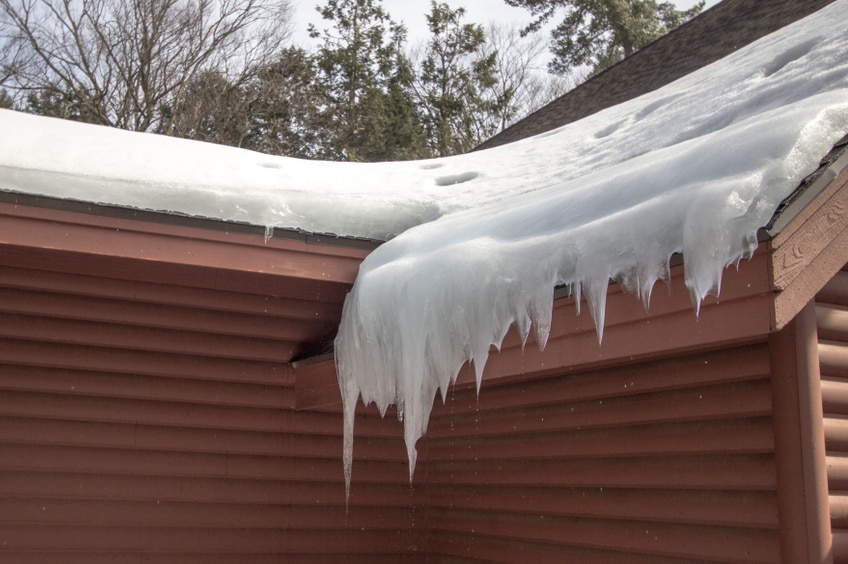As winter blows in, bringing cold temperatures and icy precipitation, heavy snows and uneven temperatures on your roof can cause ice dams. Can ice dams cause roof damage? The answer is yes. They can damage your shingles, gutter system, attic insulation, and drywall. Left untreated, ice dams can even cause mold and mildew growth. We'll look at how ice dams form, the damage they can cause, and how to prevent them.
How Ice Dams Form
Ice dams are caused by accumulated snow and uneven roof temperatures. During winter, when the upper area of a roof is warmer than the lower edge, nearest the eave or overhang, snow begins to melt and run down the roof slope. Once it reaches the colder roof edge, it refreezes, creating a block of ice called an ice dam. An ice dam prevents snowmelt from draining, causing water to pool on the roof which can eventually back-up under you shingles or cause damage to your roofing system and home's interior.
Uneven roof heating can be caused by inadequate attic ventilation or insulation. Heat from the living space below escapes through the ceiling into the attic, warming the roof surface and melting snow in patches, even if outdoor conditions keep the rest of it below freezing. Proper attic ventilation and insulation will help keep your roof uniformly cool, helping to prevent ice dams.
How Ice Dams Affect a Roof
Once an ice dam has formed, it can cause significant damage to your home if not removed. As water pools at the lower edge of the roof, it can begin to back up under the shingles. Once water is under the shingles, it can soak into the sheathing and roof deck.
If an ice dam breaks free and falls off the roof, it can damage both the gutter system and the shingles at the edge of the roof as well as any items, landscaping, or people around the area under it. Even if it doesn't come loose, the weight of an ice dam can cause gutters and downspouts to bend or warp.
After soaking into the roof deck, water can continue its journey into the attic insulation. Wet insulation doesn't perform as well as dry, and it provides a way for water to get into the drywall in the living area. If that happens, the leak may finally become noticeable to the homeowner. But if unknown or left untreated, the leak can cause warped drywall, uneven floors, and rotten wood.
If the damp area is not dried out properly, it can also lead to the right conditions for mildew or mold to grow in the attic or even the living area. Mold and mildew can cause respiratory issues for those with allergies or sensitivities. If ice dams have caused mold or mildew to creep into your home, you should have a professional address it during the repair process.
Preventing Ice Dams
Ice dams can be prevented with winter maintenance, snow removal, proper attic ventilation and insulation.
Before winter weather arrives, have your roof properly inspected by a professional roofing contractor*. They can tell you what maintenance needs to be completed and inspect your attic for proper installation and ventilation. They can also provide specific recommendations to help you prevent ice dam damage to your home.
The answer to "can ice dams cause roof damage" is a resounding yes. Left untreated, ice dams can cause significant damage to your roof, shingles, and attic spaces. It's important to take steps to prevent ice dams from forming as well as remove snow from the edges of your roof. A professional contractor can help you determine what steps you need to take to prevent ice dams and the damage they can cause.
*Contractors enrolled in GAF certification programs are not employees or agents of GAF, and GAF does not control or otherwise supervise these independent businesses. Contractors may receive benefits, such as loyalty rewards points and discounts on marketing tools from GAF for participating in the program and offering GAF enhanced warranties, which require the use of a minimum amount of GAF products. Your dealings with a Contractor, and any services they provide to you, are subject to the Contractor Terms of Use.

